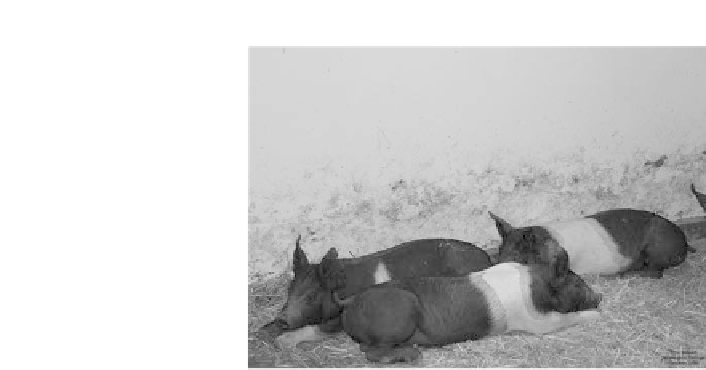Agriculture Reference
In-Depth Information
Figure
7.27.
Young pigs after weaning.
7.7.3 Pests and Diseases
The OIE list A diseases affecting swine are described here. Other diseases affect swine
but are considered to be a lesser economic threat on the international level.
Foot-and-Mouth
Disease.
This
is
the
same
as
described
for
cattle
in
Section 7.5.3.
Vesicular Stomatitis.
This is the same as described for cattle in Section 7.5.3.
Swine Vesicular Disease.
Swine vesicular disease is a serious viral disease of
swine. It is unique because researchers believe this is a disease transmitted from
humans to swine. The virus is especially persistent, surviving up to 2 years in salted,
dried, or smoked meats. Symptoms include fever, sores in the mouth, snout, feet,
and teats. It has been diagnosed in Hong Kong and most of Europe. The disease is
spread by feeding infected garbage or by infected animals showing no signs of the
disease. It is not a fatal disease for swine but results in greatly reduced gain. The symp-
toms are nearly identical to foot-and-mouth disease. There is no vaccine. If a herd is
infected, the only control consists of slaughtering and burying infected animals and
all nearby animals.
African Swine Fever.
African swine fever is caused by a virus spread by soft
ticks and infected garbage fed to swine. In some cases the disease was caused by
feeding waste from the processing of birds that had fed on the ticks, thereby becoming
carriers. Once it has infected a herd, it spreads by contact among the animals. It is
present in Africa and the island of Sardinia. The virus is relatively resistant, surviving
nearly 5 months in salted meats. Infected animals have a fever and reddish skin often
developing reddish spots. Pregnant sows will abort. The virulence of the strain








